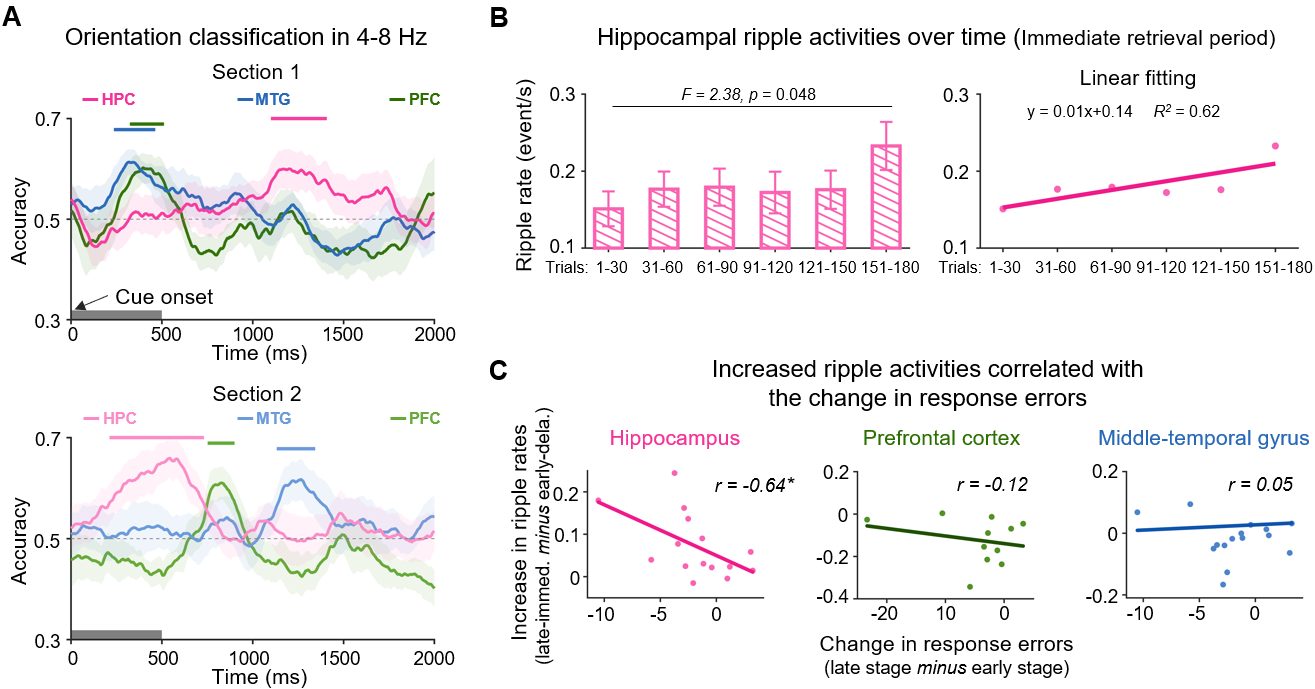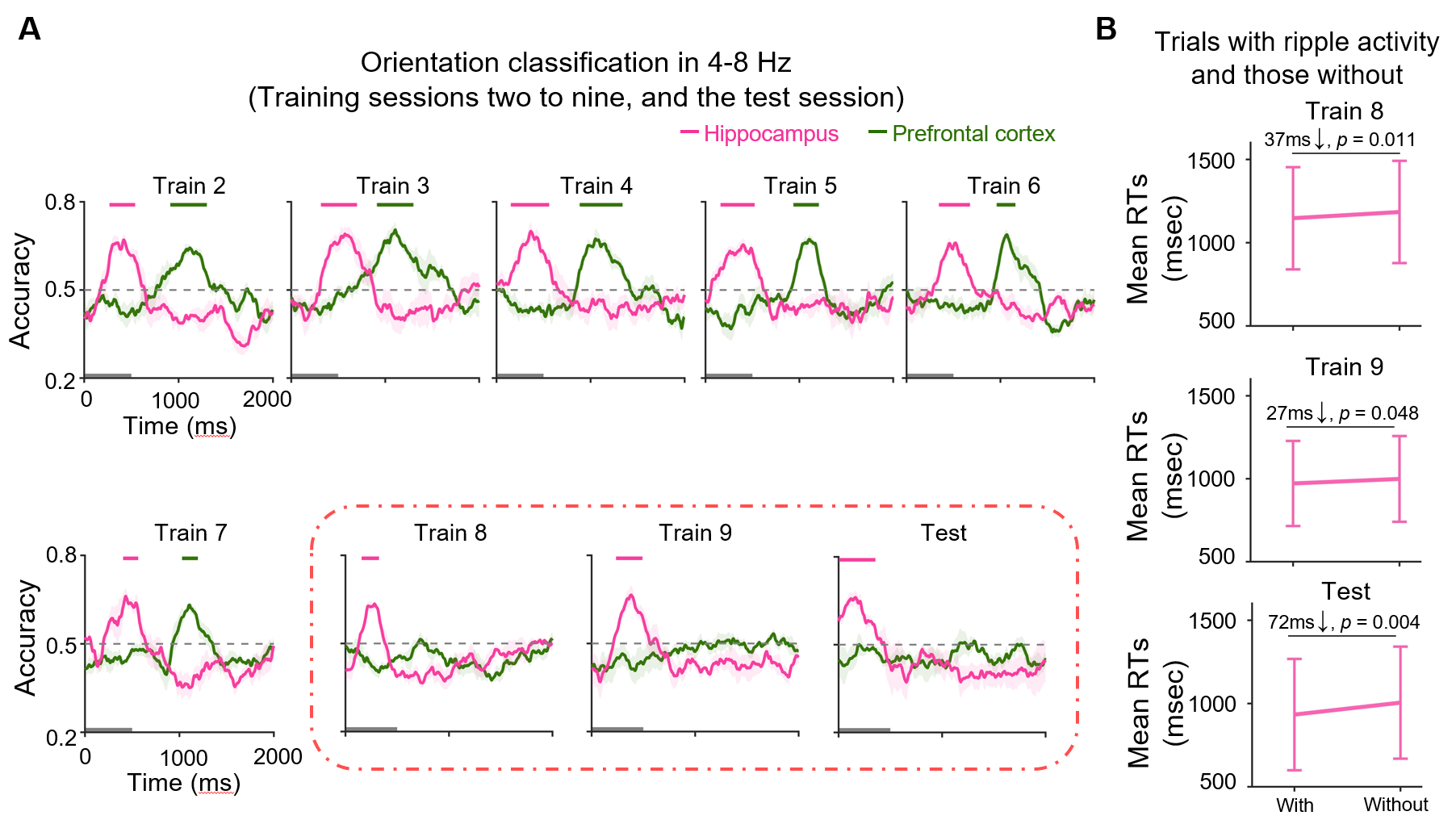Practice Tunes the Memory System | PNAS online
When a behavior becomes second nature — like typing, playing an instrument, or driving home without thinking — it reflects the brain’s remarkable ability to transform effortful actions into automatic ones. Our new study, published in Proceedings of the National Academy of Sciences (PNAS), reveals the neural mechanism behind this transformation. The work provides the first direct evidence that practice accelerates memory retrieval within the human hippocampus, allowing learned actions to unfold rapidly and with minimal cognitive effort.
Tracking the Shift from Effortful to Automatic
Using intracranial EEG recordings from 22 epilepsy patients, our team monitored how hippocampal activity evolved as participants repeatedly performed a simple memory task. As learning progressed, signals in the hippocampus appeared earlier and became more efficient — an electrophysiological signature of faster memory access. Crucially, brief bursts of high-frequency activity known as hippocampal ripples (70–180 Hz) grew stronger and more frequent with practice. These ripples marked moments when stored information was reactivated, effectively enabling the brain to “retrieve before it thinks.”

A Neural Reallocation of Control
In the second experiment, we observed a gradual shift in functional dominance: early in training, the prefrontal cortex was strongly engaged, but its contribution diminished as the hippocampus took over. During the final practice sessions, trials containing hippocampal ripples were linked to faster and more accurate responses. The data suggest that extensive practice transfers control from top-down executive regions to memory-based automatic retrieval systems.

By illuminating how the brain’s memory system adapts to repeated experience, this work offers insights relevant to skill learning, education, and neurorehabilitation. Understanding how efficiency emerges from repetition may inform new strategies to train cognition or restore function after brain injury.